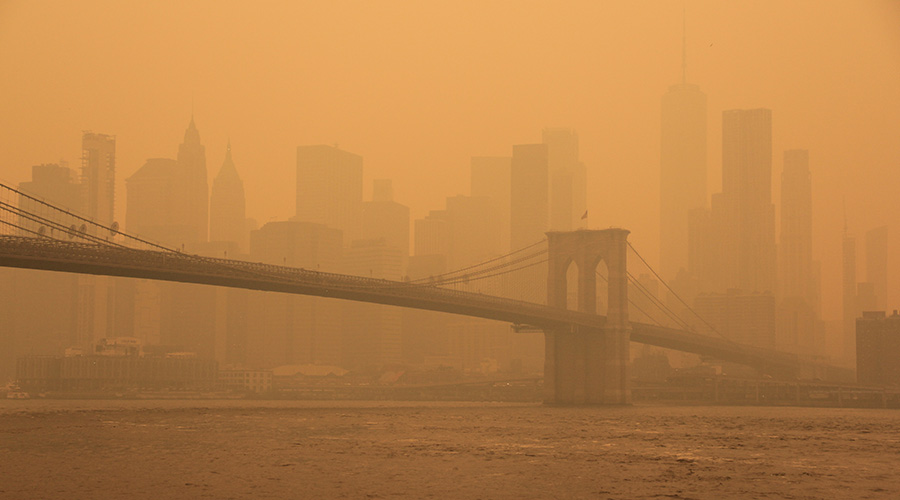Training Spotlight: Indoor Air Quality
Properly addressing IAQ complaints and concerns requires training on common causes and remedies
When building occupants are uncomfortable with their indoor environments, their complaints usually focus on indoor air quality (IAQ). But many such complaints might not be related directly to IAQ or the HVAC system.
To address the complaints properly, maintenance and engineering managers — and, in turn, front-line technicians — need to understand common contributing factors associated with IAQ complaints, how to investigate them, and how to address and resolve them. Understanding these issues can help managers develop technician-training programs that are both efficient and cost-effective.
Indoor Air and Environment
Managers increasingly are focusing on making buildings greener and more efficient, which includes using healthier, less polluting and more resource-efficient practices.
Maintenance practices, including those related to HVAC system, are directly related to the larger IAQ effort. Traditional IAQ programs are actually a subset of a broader indoor environmental quality (IEQ) management program. IEQ management aims to improve the quality of the air and environment inside buildings, based on pollutant concentrations and conditions — including temperature, relative humidity, light, and sound — that can affect the health, comfort and performance of occupants.
Improving IEQ involves planning, designing, building, operating, maintaining and renovating buildings in ways that reduce pollution sources and remove indoor pollutants while, at the same time, ensuring that fresh air is continually supplied and properly circulated.
Managers will be well served by incorporating IEQ and green building principles into their overall evaluation and management of what might appear to be IAQ-related building complaints.
Sources of Complaints
Components of the thermal environment — temperature, relative humidity and airflow — are important considerations when investigating IAQ complaints. In fact, front-line technicians might be able to resolve many complaints related to poor indoor air by simply adjusting the temperature or relative humidity in a space.
As most managers know, occupants who are uncomfortable with the building temperature tend to have lower tolerances to other building-related environmental comfort issues. Also, higher building temperatures can accelerate the rate at which building materials off-gas chemicals. If occupants are too warm, they also might be exposed to higher pollutant levels, particularly in newly renovated areas that contain furnishings, finishes and other building materials that release chemicals.
Outdoor-air Issues
How well an HVAC system controls indoor thermal conditions depends on its design and operation. Well-designed and maintained buildings will directly exhaust common indoor air pollutants outdoors. But pollutants found outdoors often are introduced into a building when the HVAC system exchanges fresh make-up air.
Whatever the source, indoor airborne pollutants can travel from areas of higher atmospheric pressure to areas of lower atmospheric pressure. Some of these pathways are deliberately designed so indoor pollutants are drawn by the HVAC system away from occupants. But problems arise when unintended air flows or stagnant air cause contaminants to build up in occupied areas.
According to the U.S. Environmental Protection Agency (EPA), the factors most important to understanding IAQ problems are indoor and outdoor pollution, ventilation parameters, airflow patterns and pressure relationships, and air-filtration systems.
Measurement instruments and techniques generally available to building personnel can be extremely useful in assessing the performance of a ventilation system for both exhausting and diluting pollutants.
Useful measurement tools include smoke tubes to observe airflow, flow hoods to measure air volume, velocity meters to measure air velocity, and carbon dioxide monitoring to estimate the percentage of outdoor air or to generally evaluate outdoor air ventilation.
Testing Considerations
IAQ problems often can be solved without measuring for specific contaminants. But measurements can be helpful in testing for clearly identified sources and target contaminants or in measuring specific contaminants, such as radon, that have no acute affects but can cause serious long-term illness.
Measuring specific contaminants also is useful in testing for mitigation effectiveness in controlling a source, both to compare with levels found in non-complaint buildings and to insure the containment of a work or construction areas in occupied buildings.
Managers also can use these extra measurements as documentation for liability or other legal or administrative reasons. When measurements are required, managers should use qualified, experienced, professionals who will adhere to acceptable protocols and quality assurance procedures.
Technology Advances
Indoor-pollutant removal processes also can be deliberately incorporated into building systems to improve IAQ and occupant comfort. Air-filtration devices are commonly incorporated into building-ventilation systems. Using high-efficiency particulate air (HEPA) filters or electrostatic air filters has become commonplace to address particulate contaminants in indoor air.
Ultraviolet (UV) lighting is another common tool used to treat fungal and bacterial contamination in indoor air. But the use of UV lighting requires managers to do some homework to make sure the UV lighting does not create an unintended IAQ problem. More facilities now commonly use UV lamps for their positive effects on IAQ, improvements to HVAC performance.
The growth of germs and fungus is particularly susceptible to a narrow spectrum of ultraviolet band light. This spectrum in the C band is referred to as UVC band light.
UVC light has been found to penetrate these microbes. The UVC damages the microbes DNA and stops further reproduction. Continued exposure to UVC over time can eventually destroy the microbe.
UVC systems not only minimize mold and other microbes that move into the air stream. They also can increase HVAC performance and reduce the need for equipment maintenance and coil replacement. Managers typically achieve this benefit by placing the UVC light emitters downstream of cooling coils and above drain pans to control airborne and surface microbial growth and transfer.
Not all UV lighting is the same. Many UV lighting systems generate ozone, which is a known upper respiratory irritant, and UV radiation, which can damage the skin and eyes. UV Class C lights do not emit ozone at light frequencies of 200-280 nanometers. This light frequency also has been referred to as ultraviolet germicidal irradiation (UVGI) for its ability to penetrate the outer structure of a cell and alter the DNA molecule, preventing replication and causing cell death.
Managers must take steps to protect staff from radiation, making sure the UV device does not operate at a frequency that generates ozone. Finally, the frequency, intensity and placement of UVC lighting can impact the germicidal effectiveness of the device.
As the IAQ issue evolves, training to detect and address problems also will need to evolve. The best strategy for managers is to design a training program that can adapt to facility occupants’ needs.
Jeffery C. Camplin, CSP, CPEA, is president of Camplin Environmental Services Inc., a safety and environmental consulting firm in Rosemont, Ill.
IAQ Information
Managers looking for information on indoor air quality (IAQ) training can access a growing array of resources, as well as the training front-line technicians need to gather data and address the problems. Here is a sampling of resources.
The U.S. Environmental Protection Agency (EPA) has developed two courses designed to help managers facilitate IAQ awareness training. The first course is Building Air Quality Training Kit, with instructor materials and handouts for a four-hour companion course to Building Air Quality: A Guide for Building Owners and Facility Managers.
The second course is Orientation to Indoor Air Quality, which provides more in-depth training with instructor and student materials to conduct a 2-1/2 day course. Both are available from the EPA’s IAQ Info Clearinghouse (800)-438-4318 or iaqinfo@aol.com. Among EPA’s other resources:
- www.epa.gov/iaq/largebldgs, which provides resources for addressing indoor air quality issues in large buildings. It includes the updated I-BEAM Building Air Quality, comprehensive, state-of-the-art guidance for managing IAQ in commercial buildings.
- www.epa.gov/mold, which provides resources for managers addressing fungal issues in buildings. This includes the popular document, Mold Remediation is Schools and Commercial Buildings.
- www.epa.gov/iaq/largebldgs/i-beam_html/ch5-diag.htm#D5.0, which provides information for diagnosing common IAQ problems.
A number of associations also offer IAQ information and training:
THE AMERICAN INDOOR AIR QUALITY ASSOCIATION (IAQA). This nonprofit, multi-disciplined organization promotes the exchange of indoor environmental information through education and research for the safety and well-being of the general public. www.iaqa.org.
THE AMERICAN INDOOR AIR QUALITY COUNCIL. This organization promotes IAQ awareness, education and certification. www.iaqcouncil.org.
THE AMERICAN INDUSTRIAL HYGIENE ASSOCIATION. This group provides guidance and training on IAQ and mold. www.aiha.org.
THE BUILDING OWNERS AND MANAGERS ASSOCIATION (BOMA) INTERNATIONAL has launched an online IAQ resource center designed to help facility professionals understand the causes of and solutions to IAQ issues. www.boma.org.
THE AMERICAN SOCIETY OF HEATING, REFRIDGERATION, AND AIR-CONDITIONING ENGINEERS (ASHRAE) conducts annual IAQ conferences and develops standards on HVAC systems. www.ashrae.org.
— Jeffery C. Camplin
|
Related Topics:











